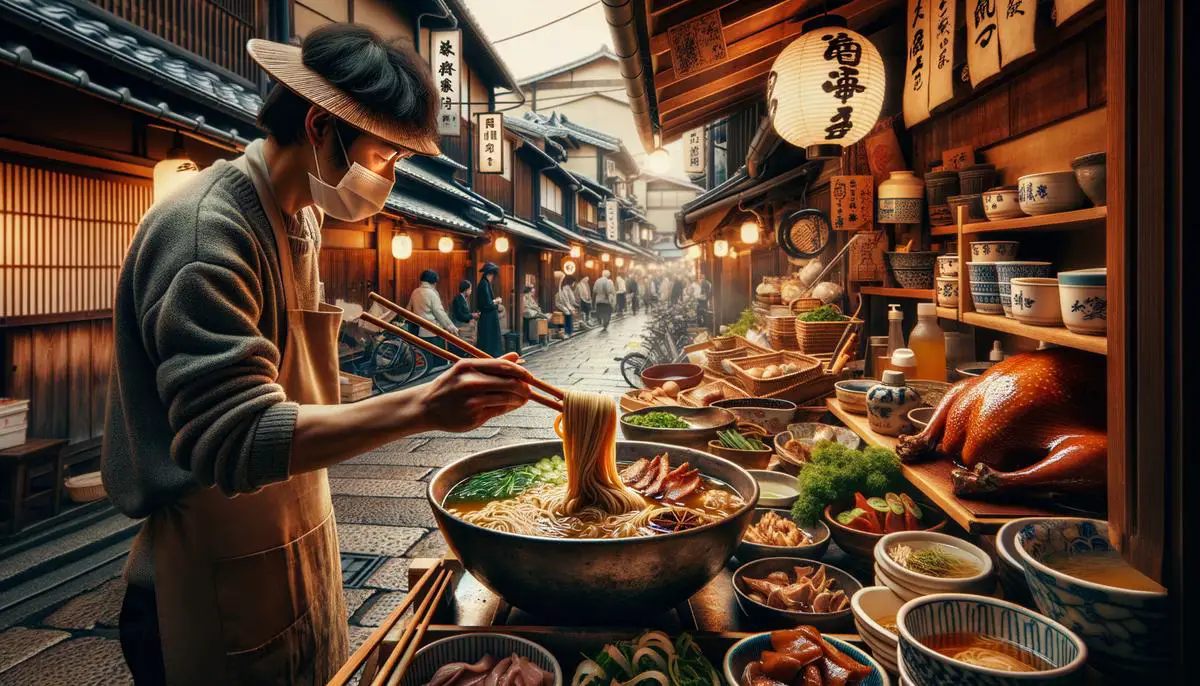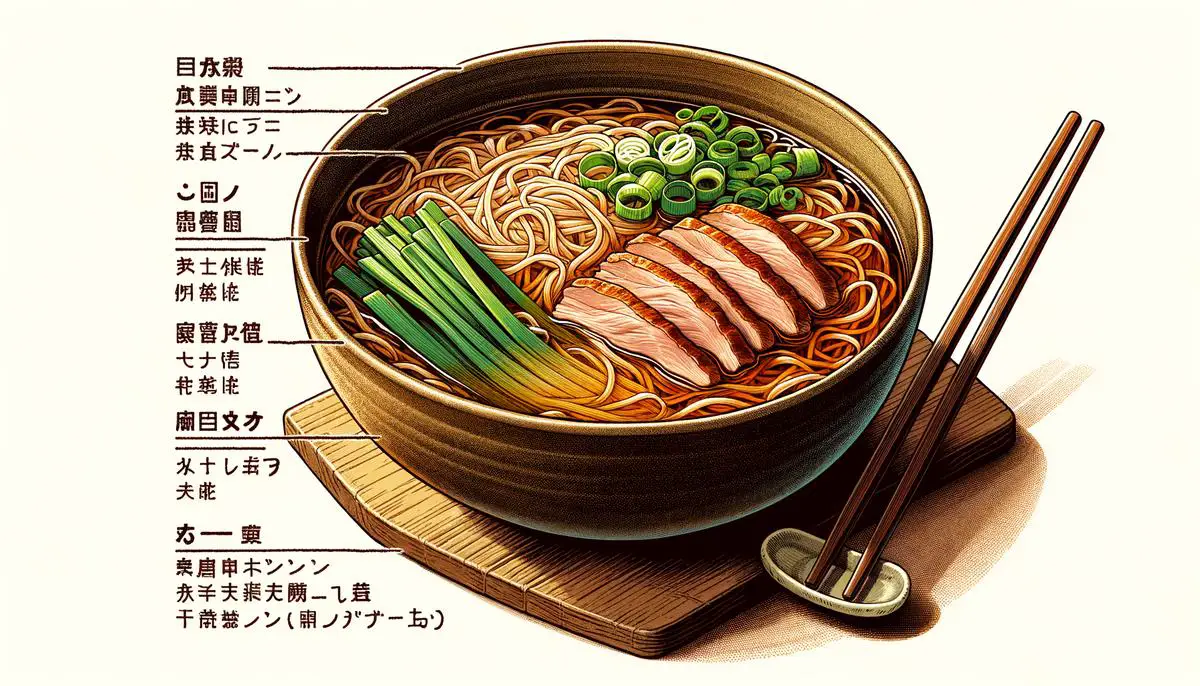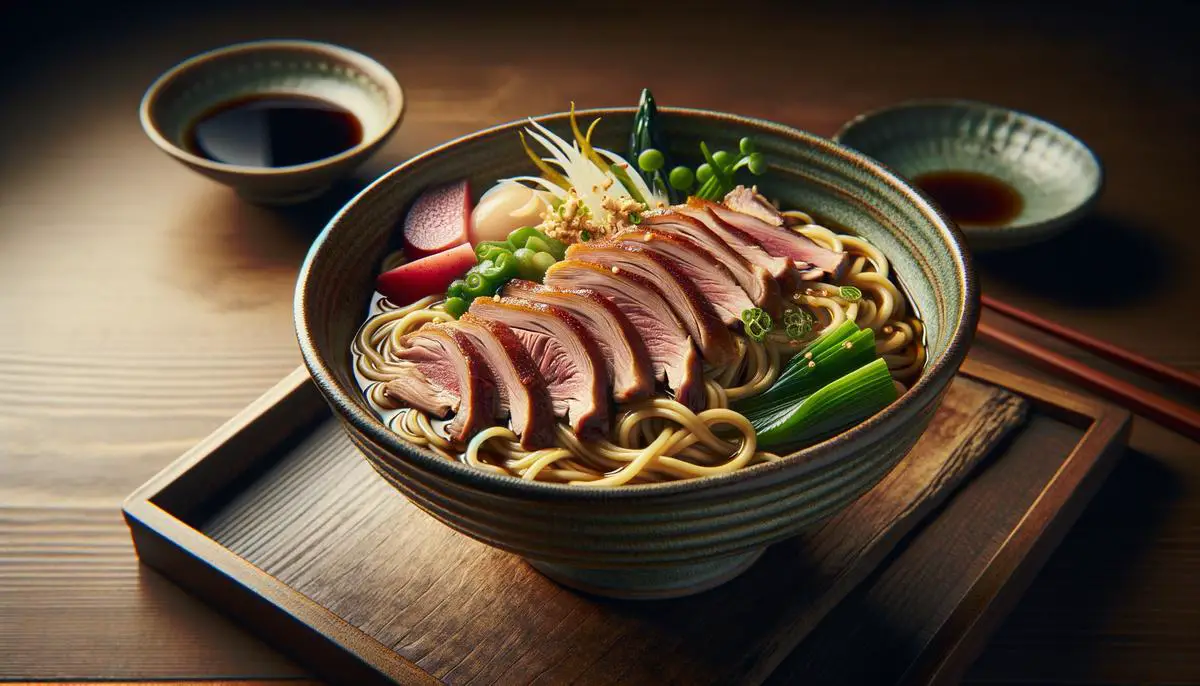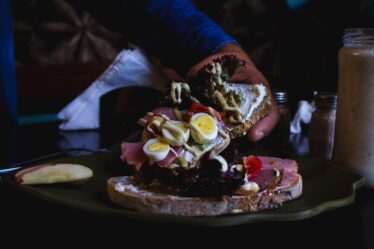
Gion duck noodles, originating from Kyoto’s Gion district, are not just a dish but a cultural emblem that tells a story of tradition, craftsmanship, and the evolving tastes of a city. This culinary delight, appreciated for centuries, represents more than the sum of its parts, combining rich history with the profound cultural philosophy of seasonality and quality. As we explore the origins and significance of Gion duck noodles, we delve into the very heart of Kyoto’s culinary heritage, uncovering the layers of dedication and artistry that have contributed to its enduring appeal.
History of Gion Duck Noodles
Gion duck noodles, a culinary gem from the historic Gion district in Kyoto, Japan, have a storied past that elevates them from a mere noodle dish to a celebrated cultural icon. The dish, known in Japanese as “Gion Kamo Soba,” has been cherished for centuries, tracing its origins back to the Edo period. It was during this time that the unique combination of duck and soba noodles first captured the hearts and palates of Kyoto’s locals and travelers alike. The secret to its longstanding popularity lies not only in the flavors but also in the meticulous preparation that respects seasonal ingredients. Ducks harvested in the winter, known for their fattier content and deeper flavor, pair exquisitely with the earthy soba noodles made from buckwheat, creating a harmonious dish that warms and satisfies with each bite.
The significance of Gion duck noodles also intersects with Japan’s culinary philosophy that emphasizes freshness and seasonality. The ducks are sourced from local suppliers who adhere to traditional farming practices, ensuring the meat is of the highest quality. Similarly, the soba noodles are often handcrafted by skilled artisans who uphold centuries-old noodle-making techniques. This commitment to quality and tradition contributes to the rich, umami-packed broth that is both comforting and complex in flavor. As it is served, the dish is often garnished with negi (Japanese long onions) or other seasonal greens, adding a crisp texture and freshness that complements the savory broth and tender duck. Over time, Gion duck noodles have come to embody the essence of Kyoto’s rich culinary heritage, offering not just a meal, but an experience that connects diners with the culture and history of this ancient city.

Cultural Significance of Gion Duck Noodles
Gion duck noodles stand as a culinary milestone, reflecting not just Kyoto’s illustrious culinary tradition but also embodying the Japanese virtue of harmonizing flavors and seasons. This dish is far from being a simple mixture of duck meat and noodles; it’s a narrative on a plate, telling stories of meticulous craftsmanship, the pursuit of perfection, and the embodiment of wabi-sabi – the aesthetic of impermanence and imperfection. With each slurp, diners are invited to experience the subtleties and complexities that define this celebrated dish. It’s an invitation to pause and appreciate the transient beauty of flavors that the season offers, made possible through the careful selection of ingredients that peak at different times of the year. This mindfulness in preparation and consumption elevates the dining experience, making it a reflective practice that resonates deeply with the cultural essence of Kyoto.
Moreover, Gion duck noodles serve as a bridge between past and present, showcasing a profound respect for culinary traditions while embracing innovation. The dish is a testament to the chefs’ dedication to preserving the legacy of Kyoto’s cuisine, ensuring that every bowl served pays homage to the generations of artisans who perfected their craft over centuries. Yet, there is an openness to adaptation, allowing for slight variations that enable the dish to evolve while retaining its core identity. This balance between tradition and innovation is what keeps Gion duck noodles relevant and cherished, not just as a meal, but as a cultural icon that continues to inspire and intrigue. It transcends the boundaries of mere sustenance, offering a deeper connection to the essence of Kyoto, making every bite a journey through time and taste.

Through the lens of Gion duck noodles, we gain a unique perspective on Kyoto’s culinary landscape, where tradition and innovation harmoniously coexist. This dish, steeped in history and craftsmanship, invites us to appreciate the nuanced flavors of the season and the meticulous care that goes into each bowl. Gion duck noodles are more than a meal; they are a celebration of Kyoto’s rich cultural tapestry, offering a taste of the past while looking forward to the future. In every serving, we find a reflection of the city’s spirit, a testament to the enduring legacy of its culinary traditions, and a reminder of the transient beauty that defines our world.



